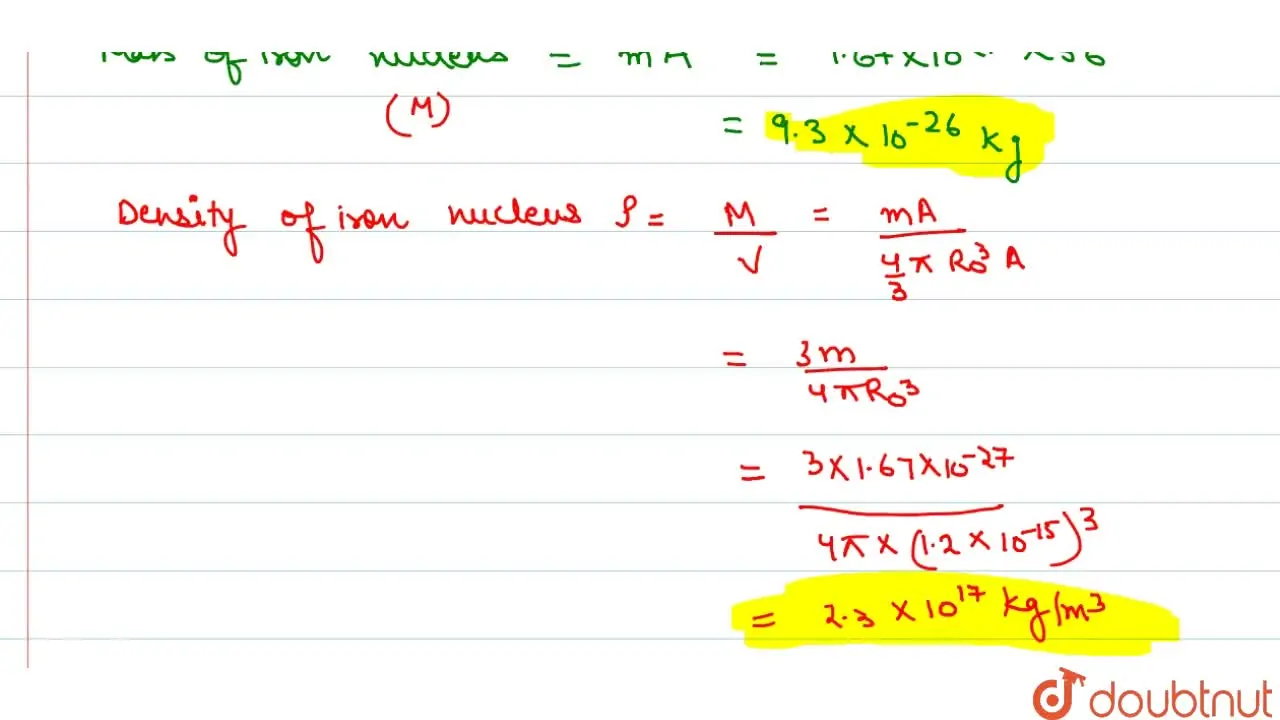The most common kind of iron nucleus has a mass number of . Find the radius, approximate mass, and approximate density of the nucleus.
Video Solution
Text Solution
We use two key ideas. The radius and mass of a nucleus depend on the mass number A and density is mass divided by volume. We use Eq.(i) to determine the radius of the nucleus. The mass of the nucleus in aatomic mass units is approximately equal to the mass number. The radius is
Since , the mass of the nucleus is approximately 56 u, or . The volume is
And the density is approxiimately
The density of solid iron , So we see that the iron nucleus is more than times as dense as the bulk material. Densities of this magnitude are also found in neutron stars, which are similar to gigantic nuclei made almost entirely of neutrons. A cube of material with this density would have a mass of or million metric tons.
|
Updated on:21/07/2023
Related Playlists
- BOOK - CENGAGE PHYSICSCHAPTER - NUCLEAR PHYSICSEXERCISE - Solved Examples17videos
NUCLEAR PHYSICS
- BOOK - CENGAGE PHYSICSCHAPTER - NUCLEAR PHYSICSEXERCISE - Exercise 5.110videos
NUCLEAR PHYSICS
- BOOK - CENGAGE PHYSICSCHAPTER - Moving charges and magnetismEXERCISE - Question Bank20videos
Moving charges and magnetism
- BOOK - CENGAGE PHYSICSCHAPTER - NUCLEIEXERCISE - QUESTION BANK59videos
NUCLEI
Similar Questions
The most common kind of iron nucleus has a mass number of 56. Find the radius, approximate mass, and approximate density of the nucleus.
View SolutionThe mass density of a nucleus varies with mass number A as
View SolutionThe mass density of a nucleus varies with mass number A as
View SolutionThe surface area of a nucleus varies with mass number A as
View SolutionThe surface area of a nucleus varies with mass number A as
View SolutionThe mass density of a nucleus varies with the mass number A as
View SolutionHow is the radius of a nucleus related to its mass number ?
View SolutionThe density of a nucleus varies with the mass number A as:
View SolutionThe mass number of a nucleus is
View SolutionThe mass number of a nucleus is
View Solution


